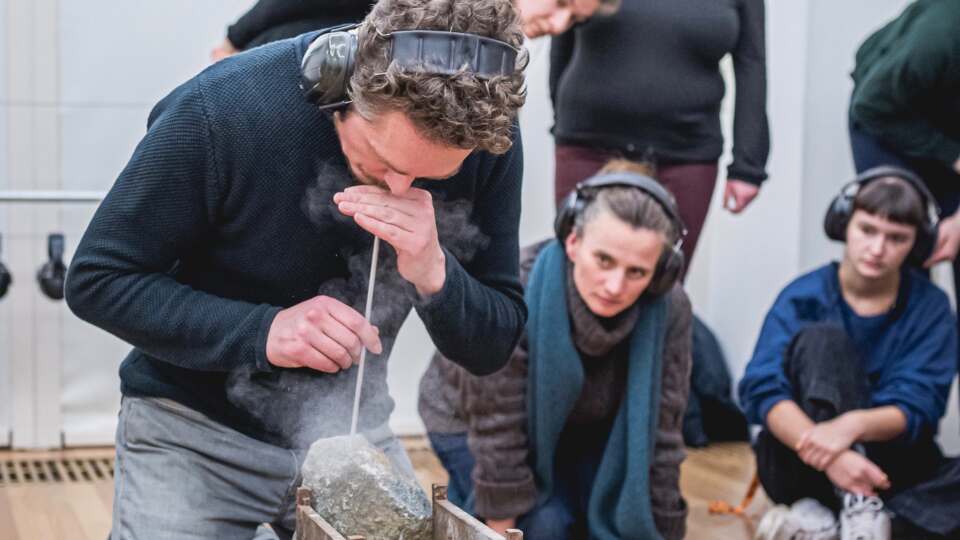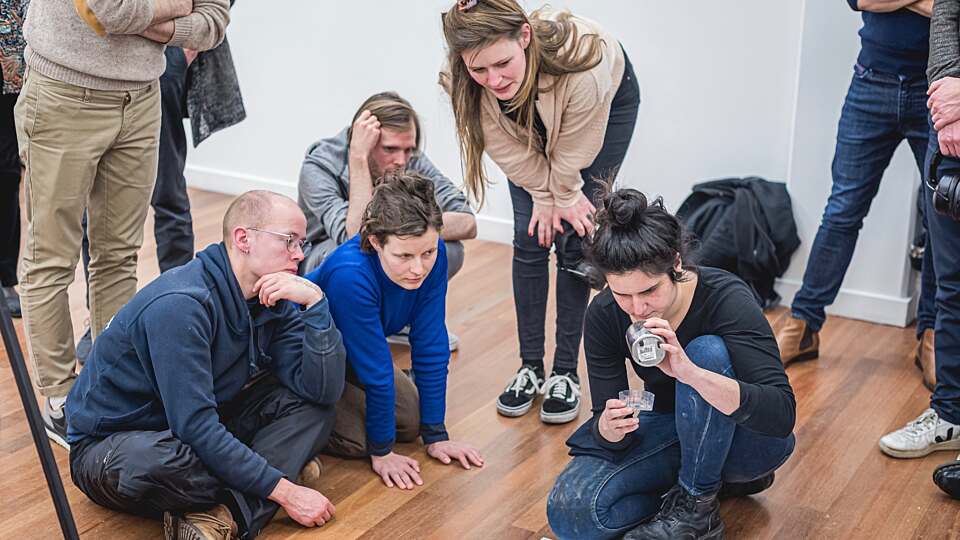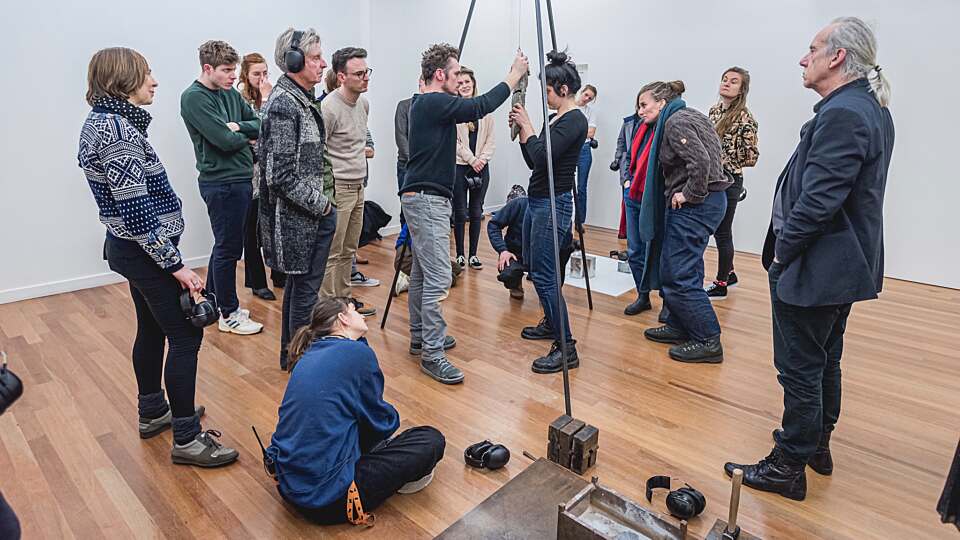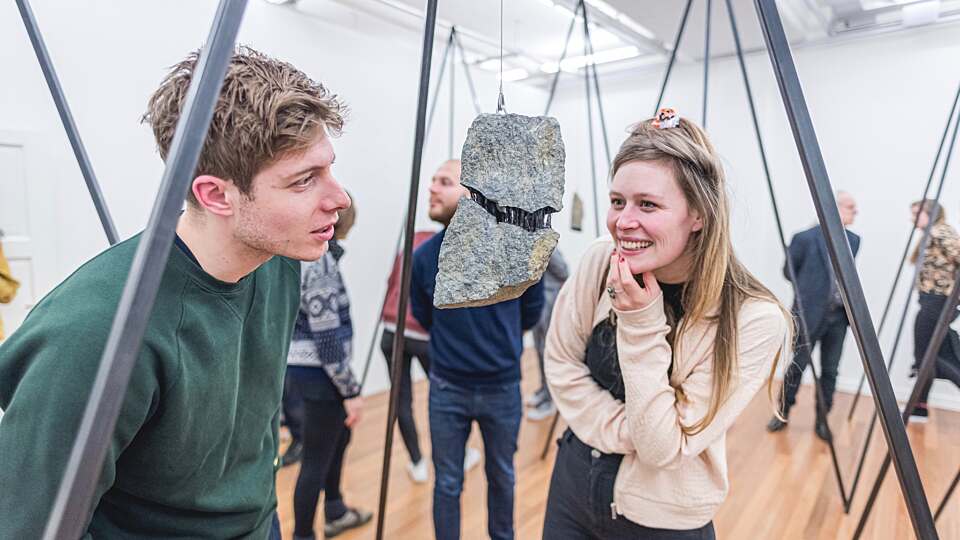We Do Matter
What happens when we disrupt or accelerate a natural process (such as the splitting of stone due to erosion)? And if I split a stone, are there then two new stones or two halves? When are they, and we, attached?

Visual artist Matea Bakula and artist/performer Nick Steur asked the question: what if we take the materials chemical polyurethane and raw stone – materials we regularly work with and are incredibly attached to – and seek to combine them? Can these materials adhere to each other, despite their enormous differences? We Do Matter consists of both a performance and an installation in which material and people seek connection.

Polyurethane (PU or PUR) was first produced by IG Farben in Germany in the 1930s. It is mainly used in construction. Polyurethane consists of both hard and soft segments. The hard segments tend to crystallise, and are inflexible and brittle. The soft segments – when separated from the hard ones – have a viscous liquid consistency. It is the amalgamation of these two elements that makes polyurethane both flexible and strong, simultaneously soft and hard.

Porphyry is a solidifying rock that has developed from the cooling of magma. Around 450 million years ago, cracks in the earth’s crust brought the magma closer to the surface where it cooled and solidified, without exposure to outside air. Typical for porphyry is its texture of large crystals in a groundmass of smaller crystals. In Belgium porphyry is mined in the quarries of Kenast, Bierk and Lessines.

